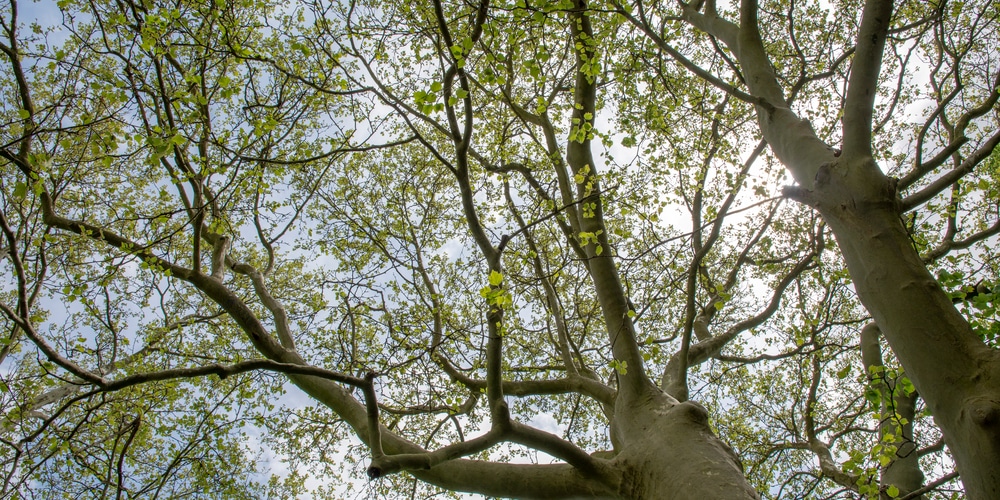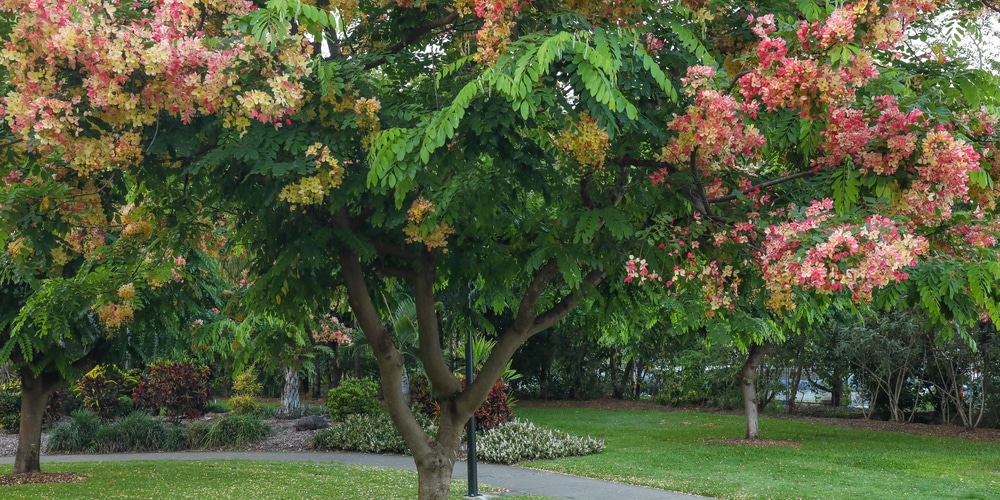Weeds can be pesky, and no one likes a weed-infested lawn. That’s where Roundup comes in – it’s the world’s best-selling weed killer (glyphosate). Because of how effective it can be in eliminating weeds, you may be wondering: can Roundup kill trees?
Glyphosate kills weeds by preventing them from making a protein that is essential for plant growth. This may sound great, but glyphosate doesn’t discriminate between weeds and other plants – meaning it has the potential to kill trees as well, unfortunately.
How Does Roundup Work?

Roundup works by being absorbed into the leaves of plants and then moving down to the roots. Once it reaches the roots, it prevents the plant from making a protein that is essential for plant growth. This is why their adverts feature the phrase “kills from the roots.”
Originally formulated to kill annual weeds, Roundup has since been found to be effective against deep-rooted perennial weeds as well. This is because the glyphosate in Roundup inhibits an enzyme called EPSP synthase, found in both annual and perennial plants.
EPSP synthase is found in the chloroplasts of plants. Chloroplasts are organelles in plant cells responsible for carrying out photosynthesis – meaning they produce the food the plant needs to survive. Without EPSP synthase, plants cannot produce food and will eventually die.
This has become a commonly used product in various landscape settings, thanks to its ability to control a wide spectrum of weeds. Targeting its roots, this weed killer is capable of preventing the growth of new weeds, as well as killing existing ones.
Can You Use Roundup on Trees?
So, can you use Roundup on trees? We don’t recommend it. While Roundup is an effective weed killer, it’s important to be aware of the potential risks that come with using it. Use extreme caution if you must use Roundup, and be sure to follow the instructions on the label carefully.
Because glyphosate does not discriminate between weeds and other plants, there is a risk of killing trees if the Roundup comes in contact with their leaves or roots. Younger plants with thinner barks, especially those that have been recently transplanted, are more susceptible to damage from Roundup.
Even spraying around the tree to target weeds surrounding the area, the trees could still be at risk if the Roundup drifts onto their leaves. If you must use Roundup, it’s best to do so on a calm day with little wind. This will help to prevent the Roundup from drifting onto nearby trees.
How to Use Roundup Effectively and Avoid Killing Your Trees
There are times that you’ve got no choice left but to use Roundup. If you must use it, follow these tips to help prevent killing your trees:
Use When There’s LIttle Wind
Although you want to avoid using Roundup when there’s any wind at all, this is especially important if you’re spraying near trees. A little breeze can cause the Roundup to drift onto the leaves of nearby trees, which could lead to their death.
Never Use Near Young Trees
Usually, younger trees have a pigmented bark – meaning their bark is darker in color. This is because the bark is thinner, and the pigment helps to protect the tree from damage. If you must use Roundup, be sure to avoid spraying it near young trees with thin bark.
Glyphosate can accumulate in the tree’s phloem. Phloem is a layer of tissue in plants responsible for transporting food and water throughout the plant. If too much glyphosate accumulates in the phloem, it can go up to the leaves and cause them to yellow and die. While it may not be instant, over the succeeding days, the leaves will begin to die.
Only Use as Directed
When using any type of weed killer, it’s important to follow the instructions on the label. This is especially true for Roundup, as it can be very harmful to trees if misused. Be sure to only use the amount of Roundup that’s recommended on the label and never exceed that amount.
Don’t Use Roundup on Close Proximity to Trees and Desirable Plants
Hand weeders and hoes are great tools to use when targeting weeds close to trees and other desirable plants. This will help to prevent any accidental damage from Roundup.
From there, once you’ve removed the weeds by hand, you can treat the area with Roundup to help prevent new weeds from growing. Remember not to do this on a windy day, minimizing the risk of the Roundup drifting and damaging other plants.
Will roundup kill trees: Final Thoughts
Desirable plants that got damaged by Roundup may not be able to be saved. If the tree is young, you may have a better chance of saving it by immediately removing the Roundup from the leaves and giving the tree plenty of water.
However, for other trees, they may not be so lucky.
It’s always best to take a proactive approach to weed control rather than waiting until the weeds are already established.
By doing this, you can help to prevent the need to use Roundup in the first place. If you do need to use it, following the tips we’ve outlined above will help to minimize the risk of damage to trees and other desirable plants.
Related Article: How Long After Roundup Can I Plant Flowers?

